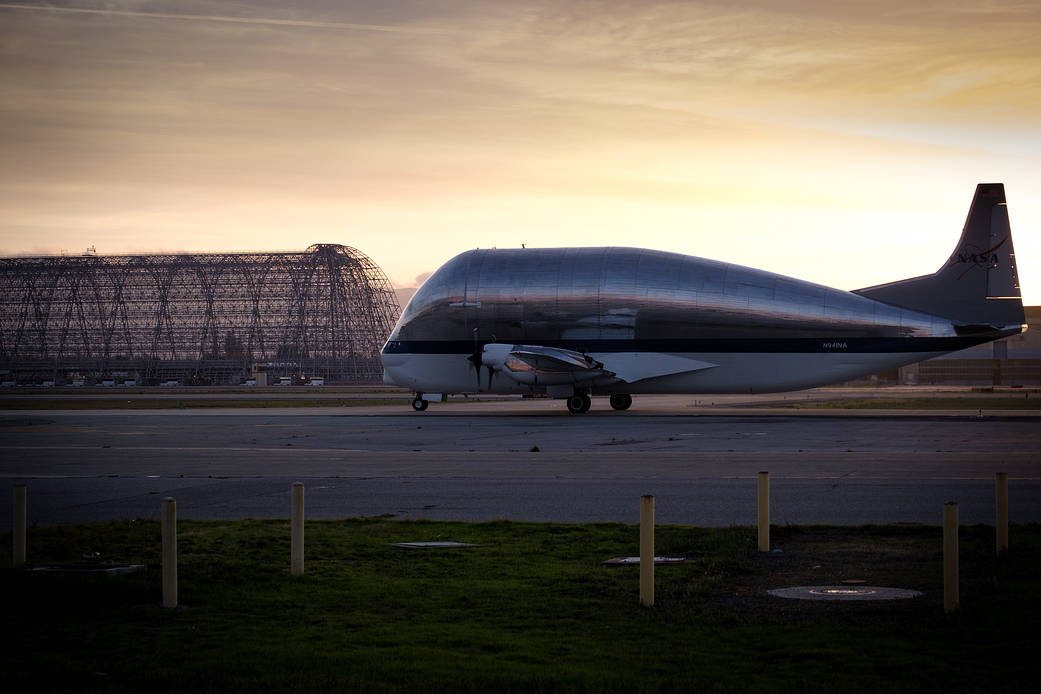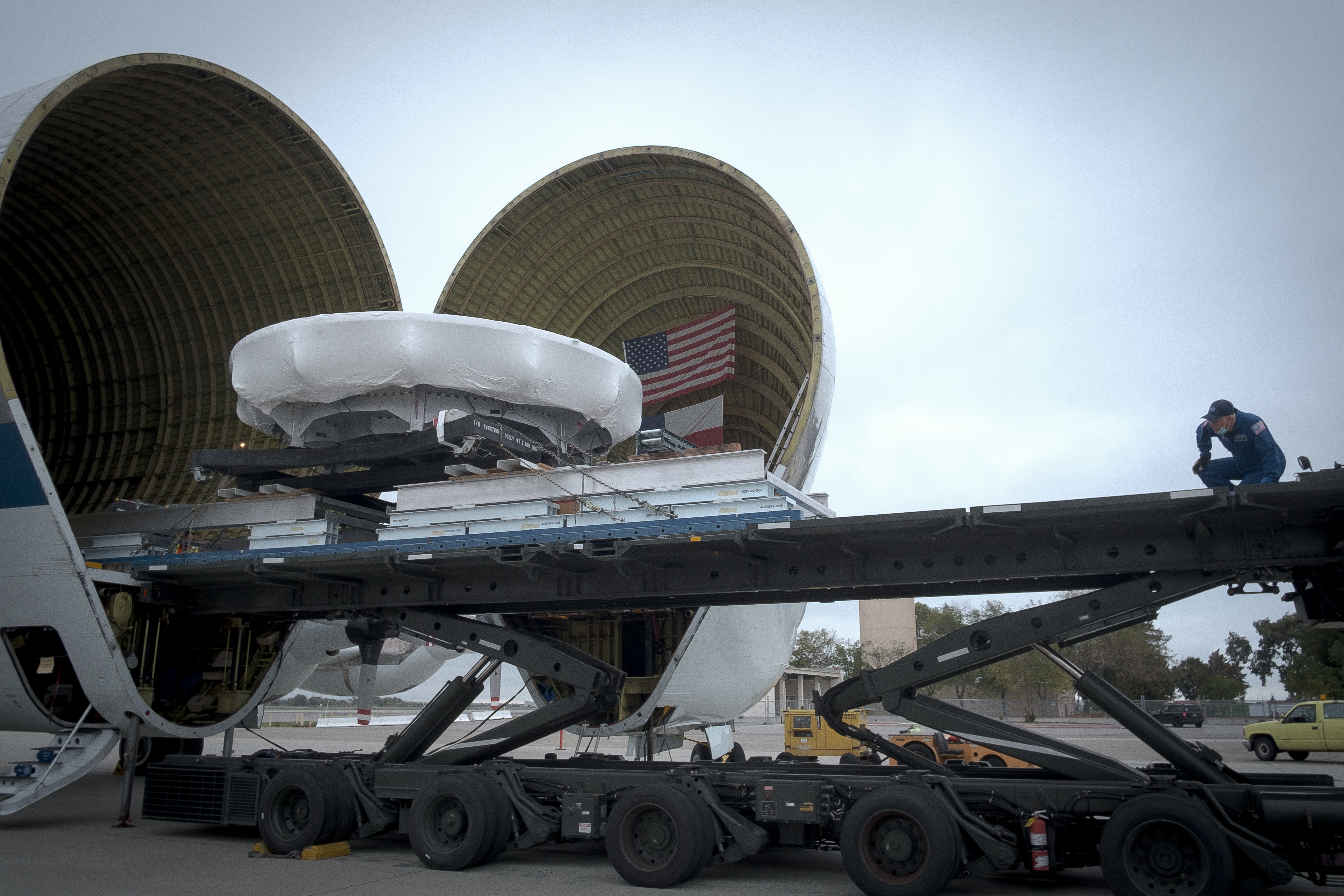Crews transported the heat shield skin for a future mission of NASA’s Orion spacecraft — via the agency’s Super Guppy oversize cargo transport aircraft — to Moffett Federal Airfield on Nov. 9. The heat shield skin for the Artemis IV mission, the third crewed mission to the Moon, is now at Moffett Federal Airfield near NASA’s Ames Research Center in California’s Silicon Valley, for the next phase of production.
Orion’s heat shield protects the spacecraft and the astronauts inside the capsule from the intense heat generated while re-entering Earth’s atmosphere. When the spacecraft re-enters at roughly 25,000 miles per hour, the heat shield will experience extreme temperatures at about 5,000 degrees Fahrenheit, or about half as hot as the sun. The heat shield has an underlying titanium skeleton covered by a carbon fiber skin. More than 180 unique blocks are bonded to the heat shield’s skin and will slowly burn away as the spacecraft travels through Earth’s atmosphere during re-entry.
The recently delivered heat shield skin will undergo heat- and pressure-treatment at Lockheed Martin’s facility in Sunnyvale, California. The heat shield skin is made up of many layers of carbon fabric that are activated by a resin. Once cured, the resin will first soften, then harden to consolidate the skin. The heat- and pressure-treatment will give the skin the necessary mechanical strength properties it needs for Orion’s thermal protection system.
Unlike other aircraft, the Super Guppy aircraft has a specially designed hinged nose that opens to an angle of 110 degrees so that cargo can be loaded and unloaded from its belly. The aircraft’s unique shape also allows it to carry bulky or heavy hardware that would not otherwise fit on traditional aircraft. At 16.5 feet in diameter, the Orion heat shield and its corresponding skin is the largest heat shield base ever developed for human spaceflight missions.
Ames oversees the development, analysis, and arc jet testing of the entry systems and spacecraft for NASA’s Artemis lunar missions. Through Artemis, NASA will land the first woman and first person of color on the lunar surface, conduct extensive operations on and around the Moon, and prepare for the first human mission to Mars.
For news media:
Members of the news media interested in covering this topic should reach out to the NASA Ames newsroom.
Author: Corinne Edmiston, NASA’s Ames Research Center
Top image: The Aero Spacelines Super Guppy aircraft taxies past Hangar One after landing at Moffett Federal Airfield. Image credit: NASA/Ames Research Center/Don Richey
























